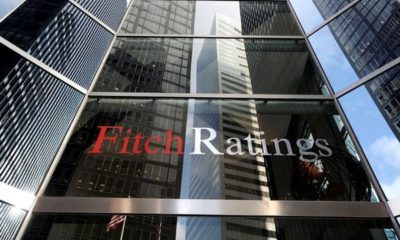- Shell Companies Emerge Best in Sustainability Innovation in Africa
Shell Companies in Nigeria (SCiN) have emerged the 2017 Best Nigerian companies in Sustainability Innovation in Africa, beating two other finalists at the 11th edition of the Sustainability, Enterprise and Responsibility Awards (SERAs) for Corporate Social Responsibility held in Lagos on Friday.
Shell companies also defeated three other contestants to win as the Best Company in Affordable and Clean Energy, and got the second runner-up prize for the Most Socially Responsible Nigerian Company for the year.
“We’re delighted at the continued recognition of our modest support to Nigeria and Nigerians to make life better and to create opportunities to individuals and institutions, particularly in our host communities,” said the Managing Director, The Shell Petroleum Development Company of Nigeria Limited (SPDC) and country Chair, SCiN, Mr. Osagie Okunbor.
“We are challenged by these laurels to do even more as CSR remains part of the DNA of the Shell business, and we are striving to improve our partnership with NGOs, government and communities to ensure our people participate more in the execution of programmes and own them for greater sustainability,” he added.
Leveraging its support for entrepreneurs for bright energy ideas through the globally acclaimed Shell LiveWIRE programme, SPDC showcased its numerous social intervention programmes including the training and empowerment of hundreds of youths particularly in its host communities to clinch the prize as the best company in affordable and clean energy.
The sustainability innovation award resulted from the renewable energy solution as an alternative for powering the Shell-supported Obio cottage hospital, Port Harcourt which led to significant cost savings in energy consumed and enabled the hospital to focus its resources on its core aspiration of providing quality healthcare for the people.
Due to its success, the solution has been replicated in seven other Shell-supported health facilities in the Niger Delta.
The SERA-CSR Awards is an annual event to celebrate organisations investing resources in the improvement of lives of stakeholders and contributing to the development of Africa through their social performance and investment programmes.
A total of twenty-six awards were won by corporate organisations and individuals in recognition of their sustainable development and social investment efforts in Africa.
Apart from their three winning entries, Shell companies also got nominated in four other categories: Best Company in Poverty Eradication; Best Company in Provision of Clean Water and Sanitation; Best Company in Partnership for Development; and Best Company in Support of SMEs.
Shell Companies in Nigeria – SPDC, Shell Nigeria Exploration and Production Company (SNEPCo), and Shell Nigeria Gas (SNG) work with government, communities and civil society to implement programmes that have a lasting impact on lives in the Niger Delta and Nigeria as whole.
Social investment activities focus on community and enterprise development, education, health, access-to-energy and since 2016, road safety.
This, however, excludes community-driven development programmes and initiatives delivered through the Global Memorandum of Understanding (GMoU) which focuses on various themes as determined by benefiting communities.
In 2016 alone, Shell Companies in Nigeria spent $29.8million on social investment projects and awarded 94 percent of their contracts valued at over $0.74billion to Nigeria companies while $1.4 billion was paid to the Nigerian government in royalties and corporate taxes, and another $106.8million contribution made to the NDDC as required by law.
Since 2003, SPDC and SNEPCo have trained over 6,550 Niger Delta youths in enterprise development and have awarded scholarship grants to over 7,652 secondary school students and 4,435 university students in the last six years.

 Naira4 weeks ago
Naira4 weeks ago


 Naira4 weeks ago
Naira4 weeks ago




 Naira4 weeks ago
Naira4 weeks ago




 Naira3 weeks ago
Naira3 weeks ago
 Commodities4 weeks ago
Commodities4 weeks ago


 News4 weeks ago
News4 weeks ago
 Travel4 weeks ago
Travel4 weeks ago




 Naira3 weeks ago
Naira3 weeks ago






















